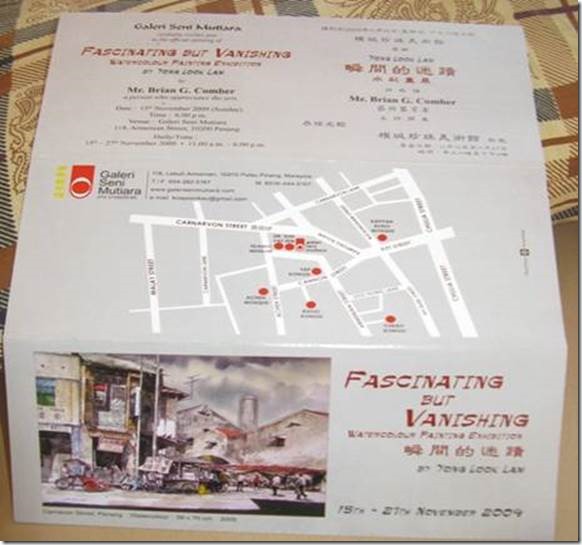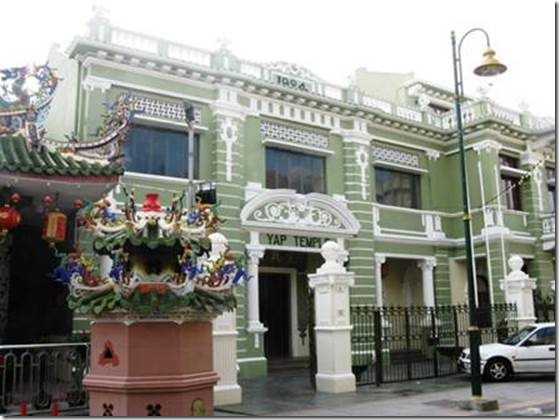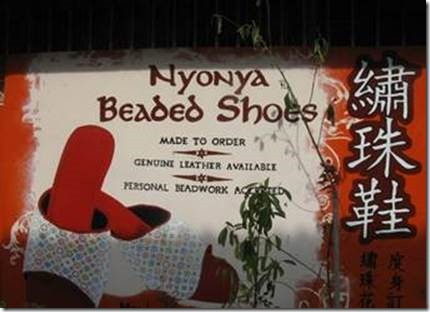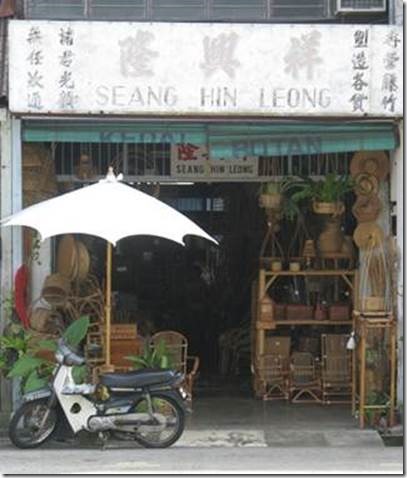Hi Everyone,
This is the final installment my George Town day with Elizabeth. I totally enjoyed my day with Elizabeth, and writing these emails, I’ve learned even more as I try to explain the meaning of each photo. We certainly will return to George Town and I can act as guide to Randal! (Though no where near as good as Elizabeth!!)
Armenian Street
I have pulled the bits and pieces from the several pages about Armenian Street that I thought matched the time we spent there and my own bit of knowledge. Khoo Su Nin did a really wonderful job with Streets of George Town Penang. An interesting footnote is that she is a graduate of Duke University in Durham, North Carolina.
“A map of the early 1800s shows that Armenian Street was once called Malay Lane due to the Malay kampong settlement there. By 1808, the name had been changed to Armenian Lane. The Armenian trading community from India settled here, but instead of remaining in a neighbourhood between the Chulias and the Acehnese, sought social mobility by moving their houses to the suburbs…” “… the Armenian diaspora that settled in Shiraz in Persia, and then in Bombay and Calcutta before coming to Penang.” “….by far the most famous Armenians in the region were the Sarkies brothers who made their mark as hoteliers of the Eastern & Oriental in Penang and of the Raffles in Singapore. By the 1920s most of the Penang Armenians had emigrated largely to Singapore and from there to Hong Kong and Sydney where there are significant Armenian minorities.” “A few houses on Armenian Street may have survived from the time when the Armenians lived here. These houses were probably retrofitted to function like shophouses when the Straits Chinese took over the neighborhood.” Streets
Armenian Street.
Elizabeth and I visited the Galeri Seni Mutiara on Armenian Street looking for art. But trying to tell that story led me to read about Armenian Street in general. In many ways Armenian Street is the history of the world of southeast Asia including Malays, Armenians, Chinese: the fleeing populations and their success stories. Neighborhoods changed as different groups moved in and out for different reasons, like moving “up to the suburbs” or even to other parts of Asia and the Pacific. The Armenian story and the Jewish story in this area are very similar both coming along the trade route from India. And if you have ever had a Singapore Sling, you have a connection to Raffles Hotel where the drink was invented and now costs more than most cruisers will spend for an entire meal almost anywhere else.
Also on Armenian Street were an Islamic Museum, closed for the holiday; the lovely green and white Yap Kongsi building and temple; and the shophouse that was Sun Yat Sen’s base in Penang.
Galeri Seni Mutiara’s exhibit the day we visited.
I don’t know if there was a “no photo” sign or if I just made the assumption that photos weren’t a good idea so I have none. This is a photo of the exhibit brochure. Elizabeth and I went into the gallery housed in a lovely, very large renovated shophouse. We looked at the paintings and were about to leave when Elizabeth went back to ask the owner for a brochure of the exhibit. Until that time he had been talking with a gentleman whom he seemed to know pretty well and I didn’t want to interrupt and really didn’t know what I would say, anyway. Elizabeth’s question and her comment that I was studying watercolor seemed to capture his attention. Mr. Koay Soo Kau provided a brochure and then sat with us for the next 30 minutes chatting about art, George Town, Malaysia, Dickens, Shakespeare and a local artist that Elizabeth had met years ago. He offered us something to drink. He showed us painting from past exhibits and then, a real treat, some of his own paintings. We probably would have been sitting there still but work intervened. It seemed a rather involved transaction concerning the buying and selling of a quite large painting so Elizabeth and I nodded our good-bye and thank-you and went on our way. I had planned to take a photo of Elizabeth with Mr. Koay since they seemed to have so much in common, Elizabeth taught English and Mr. Koay had loved studying it. He made us guess his age and we were flattered that he thought we were younger than he was. He beat us by maybe a year or two but that was it. A very charming man dedicated to art and helping new artists succeed. If you look at the website, under the artist link, select Gallery Artists and you can see My Koay’s work. http://www.galerisenimutiara.com/gallery1.php
Under the Events link you can see the works of Yong Look Law whose works were hanging in the gallery when we visited. http://www.galerisenimutiara.com/events.php
Yap Temple and the lovely green and white Yap Kongsi at the corner of Armenian and Cannon Streets.
The Yap Kongsi was built in 1924, the temple in 1950 and refurbished in the 1990s. Judging from this photo I was obviously taken much more by the green and white building than by the temple which only gets one small corner of my photo. Now that I have read more about it, I wish I’d taken a better photo. But it was getting to be late afternoon and I was getting tired.
We left the gallery about 4:30 and I was starting to wear down and was definitely getting hungry. It had been a while since our chocolate samples and no matter what time we would leave George Town later in the afternoon, it would be at least an hour on the bus to get back to our boats. And we still needed to visit the Jewish Cemetery. Time for food! We stopped along our way at a small corner restaurant (open on the holiday because it was Chinese) and had small meals that oddly included the best French fries in the world.
Nyonya is a term for the descendants of late 15th and 16th century Chinese immigrants to other parts of Southeast Asia during the Colonial era. (I think.)
There is a whole way of dress connected to the Straits Chinese and the Nyonyas. Beaded shoes would have fit perfectly with the long silky/satin skirts and fitted beaded jackets.
A shop passed along our way.
Our last stop was to the Jewish Cemetery and then we splurged and took a taxi back to Batu Maung because we were both just too tired to wait for the bus and then sit through the 90 minute ride and then walk up the hill to the yard. As it was we didn’t return to the boats until about 6:30 pm. But it had been a wonderful day of unplanned adventures. Oh, and somewhere along the way we stopped at a Heritage Center where the employee had time for us and that’s where I bought my copy of Streets and I’m really glad I did because reading it has taught me a lot about Penang and George Town. Now when Elizabeth points out places and tells me about Penang, I think I might be a better pupil.
Ru
Doramac





